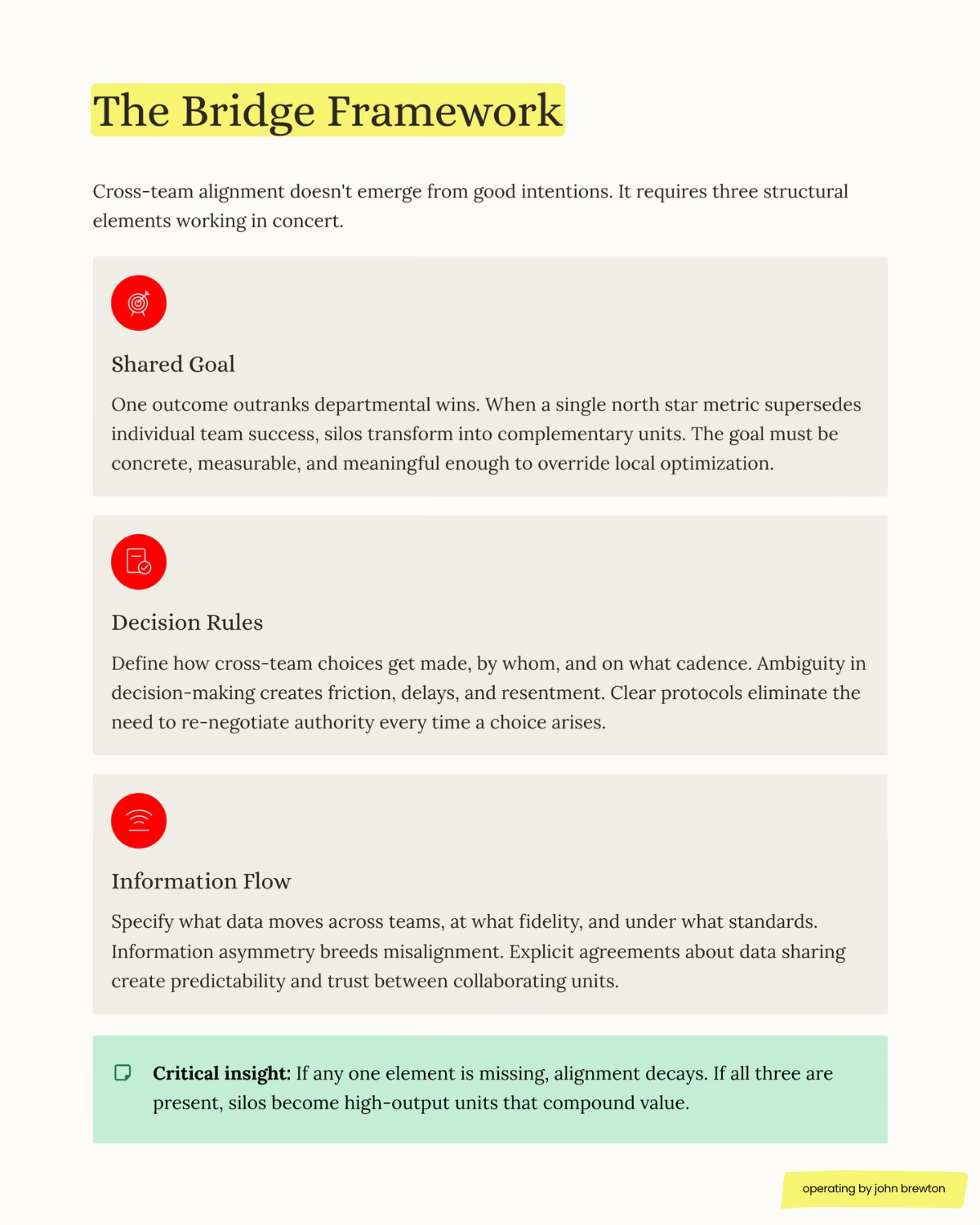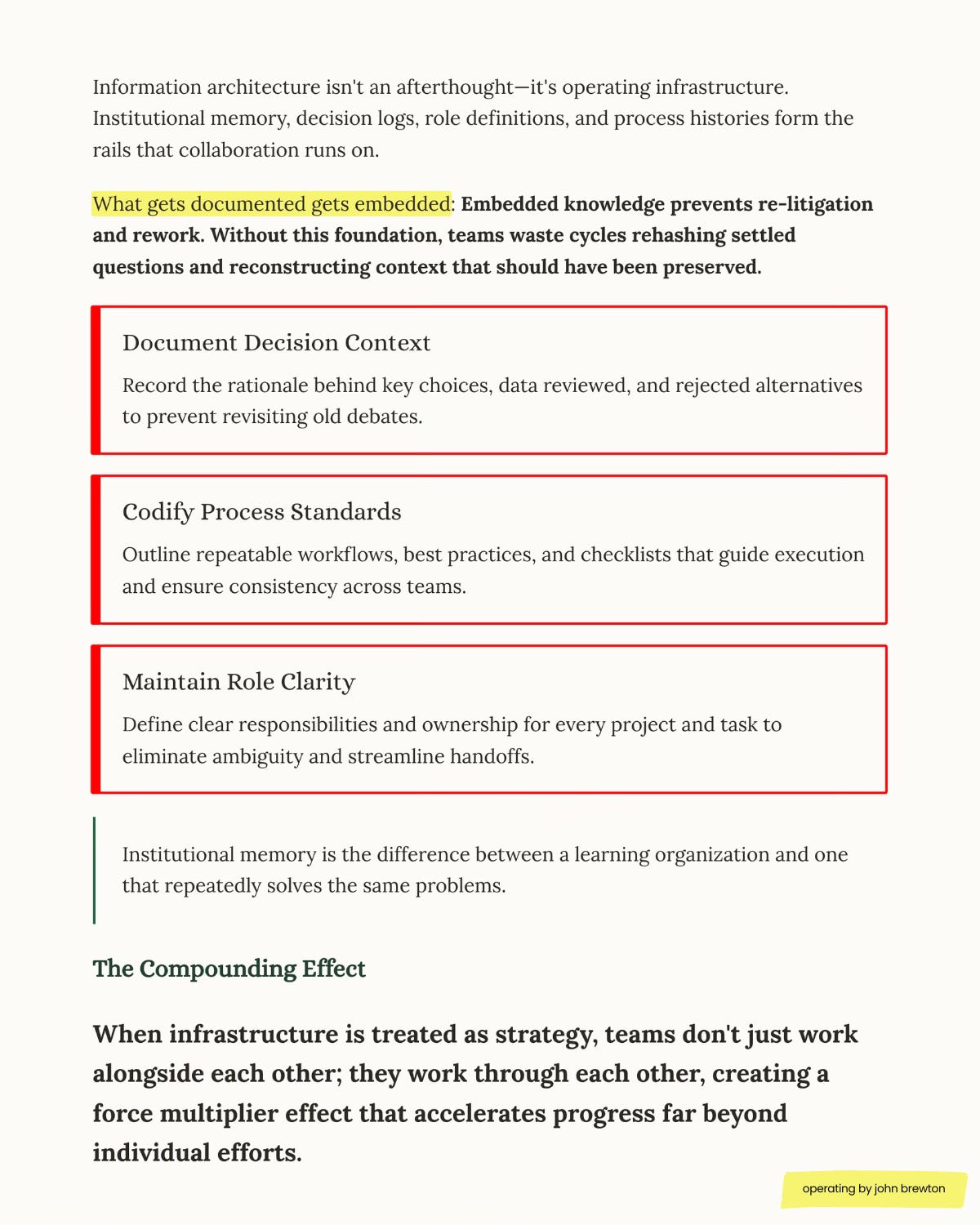We blame silos because they are visible. Departments sit apart, speak in jargon, and chase different metrics. Silos are not the enemy. Specialization creates rhythm, speed, and quality. Accounting needs control. Sales needs tempo. Product needs cycles. Silos reduce cognitive load and anchor expertise.
The problem is leadership that fails to connect them.
When leaders do not define a shared goal, set rules for how teams decide together, or design how information moves, silos become islands. Work fragments. Duplication spreads. Politics fills the gaps. Trust decays. People paddle hard in the water between departments, but the company drifts.
Keep your silos. Architect new bridges.
Why Silos Exist, and How They Help
Silos are a feature of specialization, not a bug.
They do the following:
↳ Reduce switching costs. Craft work improves when context is stable.
↳ Protect standards. Finance closes the books because its process is consistent.
↳ Accelerate training. Apprenticeship works best inside a known domain.
↳ Clarify ownership. Teams know what “excellent” means for their function.
“Break silos” often destroys useful routines and creates chaos. The question is whether each silo’s work compounds toward the company’s or team’s primary objective.
That is a bridge problem, not a silo problem.
The Bridge Thesis
The Trust Economics of Silos
Keep reading with a 7-day free trial
Subscribe to Operating by John Brewton to keep reading this post and get 7 days of free access to the full post archives.




